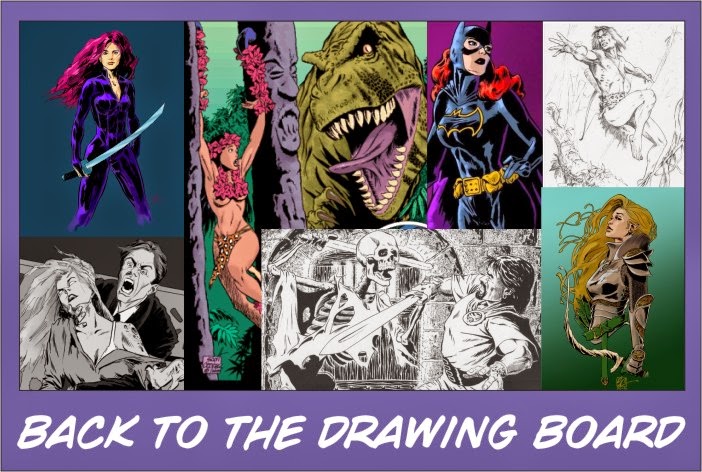My approach to drawing the head and face owes a great deal to the teachings and drawings of the mid-twentieth century American illustrator Andrew Loomis. I highly recommend his books as studio resources. Other influences, for a large part, come from comic books and strips, artists like Alex Raymond, Stan Drake, Al Williamson, Neal Adams and many others.
Many sources begin with, "start with an oval, or egg shape." That's not a bad suggestion, but what sort of oval are we looking for? We need to be a little more specific. I think we need, as so many cartoonists say, to start with a circle.
This is where the mental process starts to get a little odd; we will be working on producing a two-dimensional image, but much of our thinking has to be in three dimensions. Draw flat, but think in the round. We want to think of this circle as a sphere, perhaps more specifically as a globe. The globe spins on an axis and has an equator around the middle. We also need a line of "longitude" that will become the centre line of the face. Mark a point on the centre line halfway between the north pole and the equator.
The sides of our globe need to be somewhat flattened, so we slice a bit off either side. These cuts are a little bit angled from top to bottom and from front to back. the centre line is extended straight down from the equator, parallel to the axis, as if you were hanging a plumb line from the north pole. Mark the centre line with divisions equal to the length between the equator and the top mark on the centre line. The first mark below the equator is roughly the bottom level of the nose, and the second mark will be the bottom of the chin. A line halfway bewteen the chin and the top of the head will mark the level of the eyes. The equator will become the brow line, and the top mark indicates the edge of the hair line. A line about one third of the way down between the nose and chin indicates the mouth.
Some more very general proportions: the width of the eyes is approximately one fifth of the width across the eye line, with about one eye's width between the eyes. The nose is about one eye wide; the mouth is about as wide as the space between the centres of the eyes; the ears might fit neatly in the part of the original circle that were cut off - the tops are about level with the brow, and the bottom of the lobes about level with the base of the nose. The angle of the jaw is about level with the mouth line.
In profile, the jaw begins at the halfway point and sweeps down and forward; the ear begins at the half and curves back. The head in profile fits pretty well in a square; this means you might have to add just a sliver more mass to the back of the skull to lengthen the original circle a little. The hair sits on top of and surrounds the skull; it has shape and mass of its own.
The advantage of thinking about the "globe" first is that it allows to fairly easily draw the head in any position, from any angle. But remember, these are only guidelines and generalities; it will always be to your advantage if you draw from life. The more practice you get from observing how the head is constructed, the more visual information you will be storing for future reference.






No comments:
Post a Comment